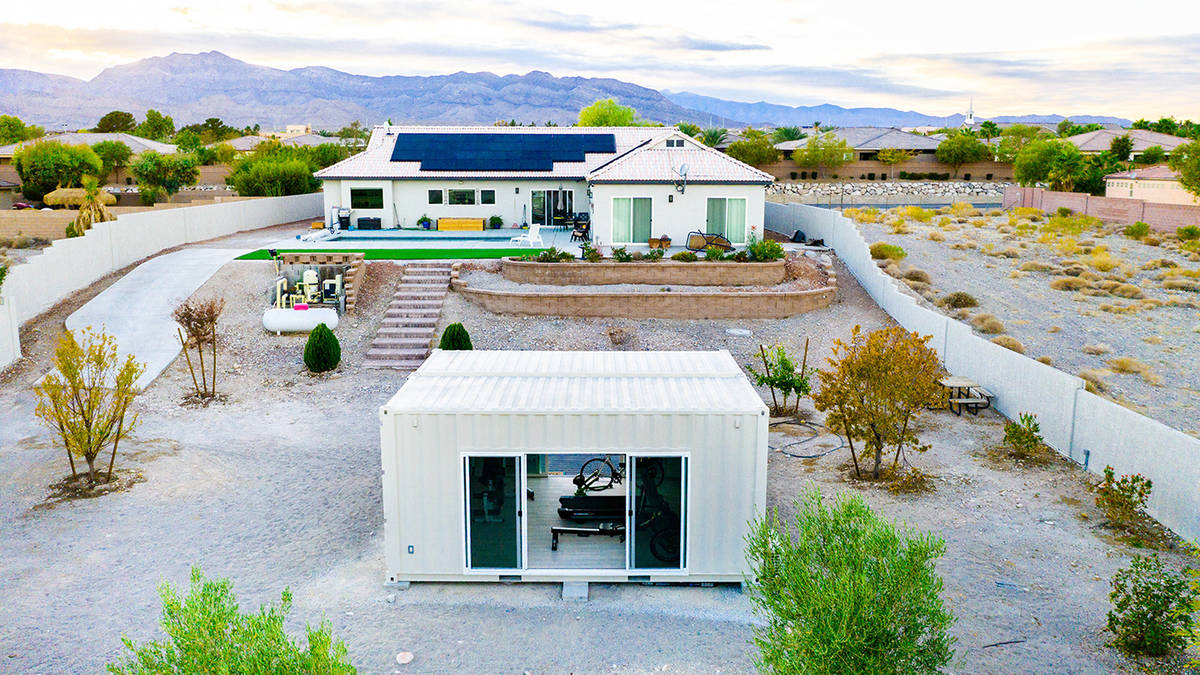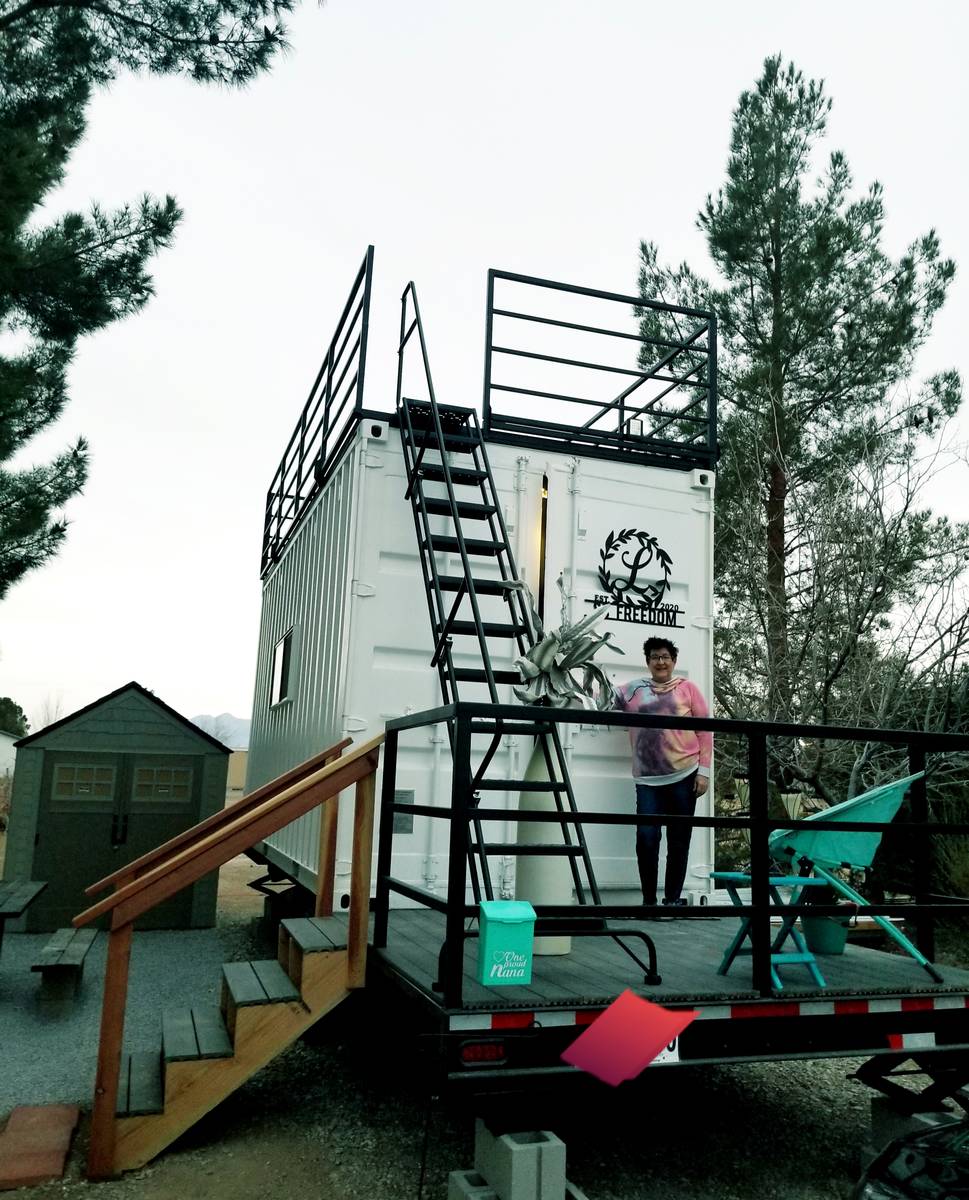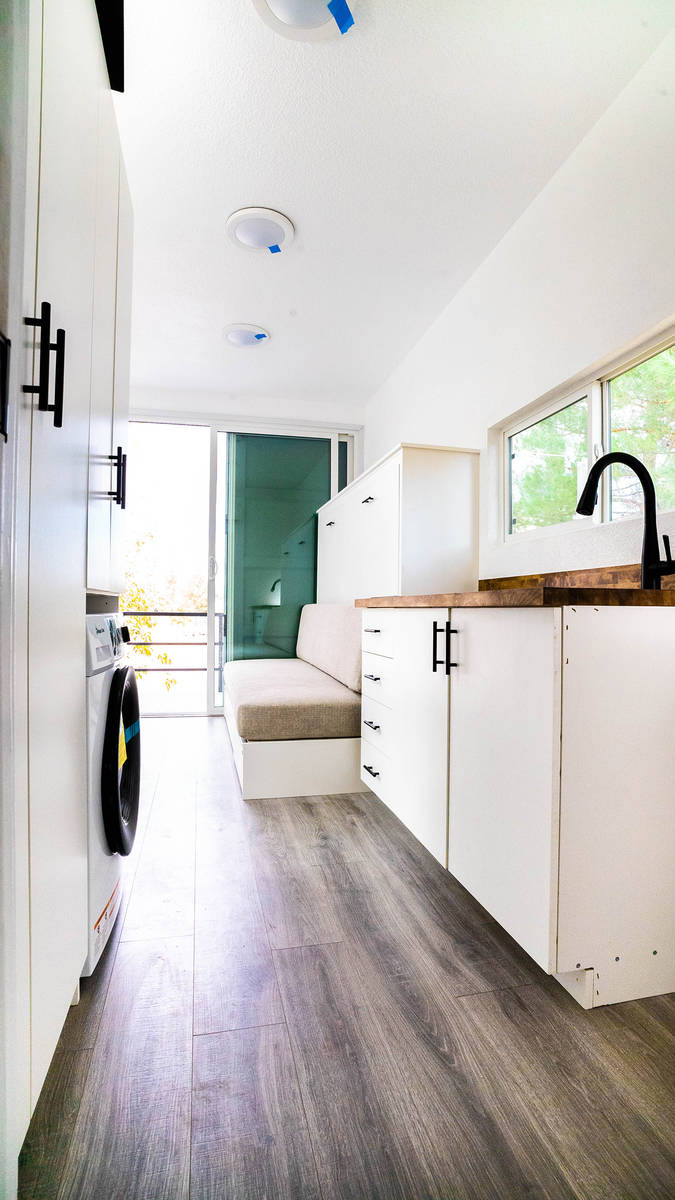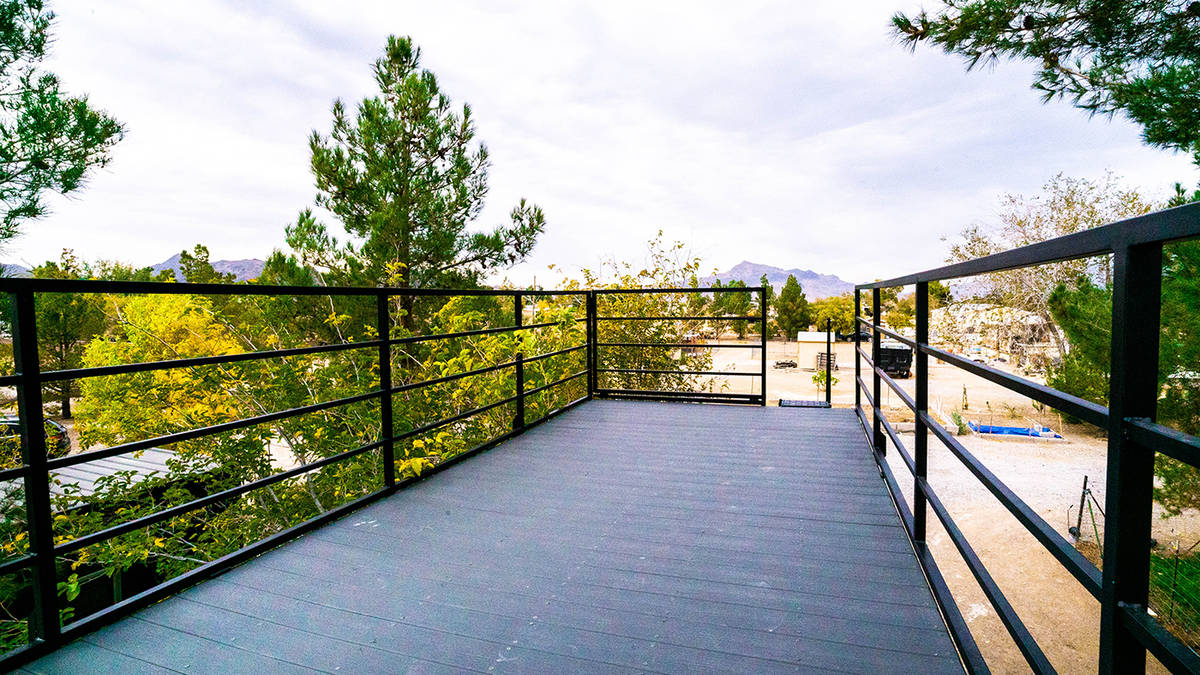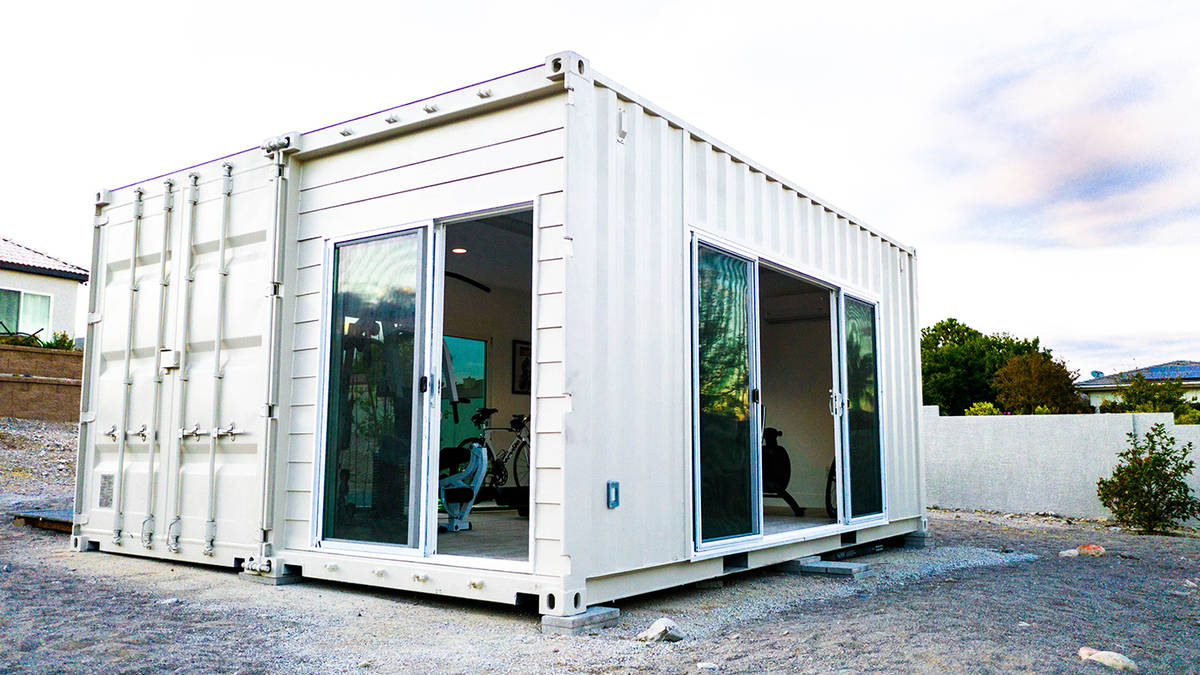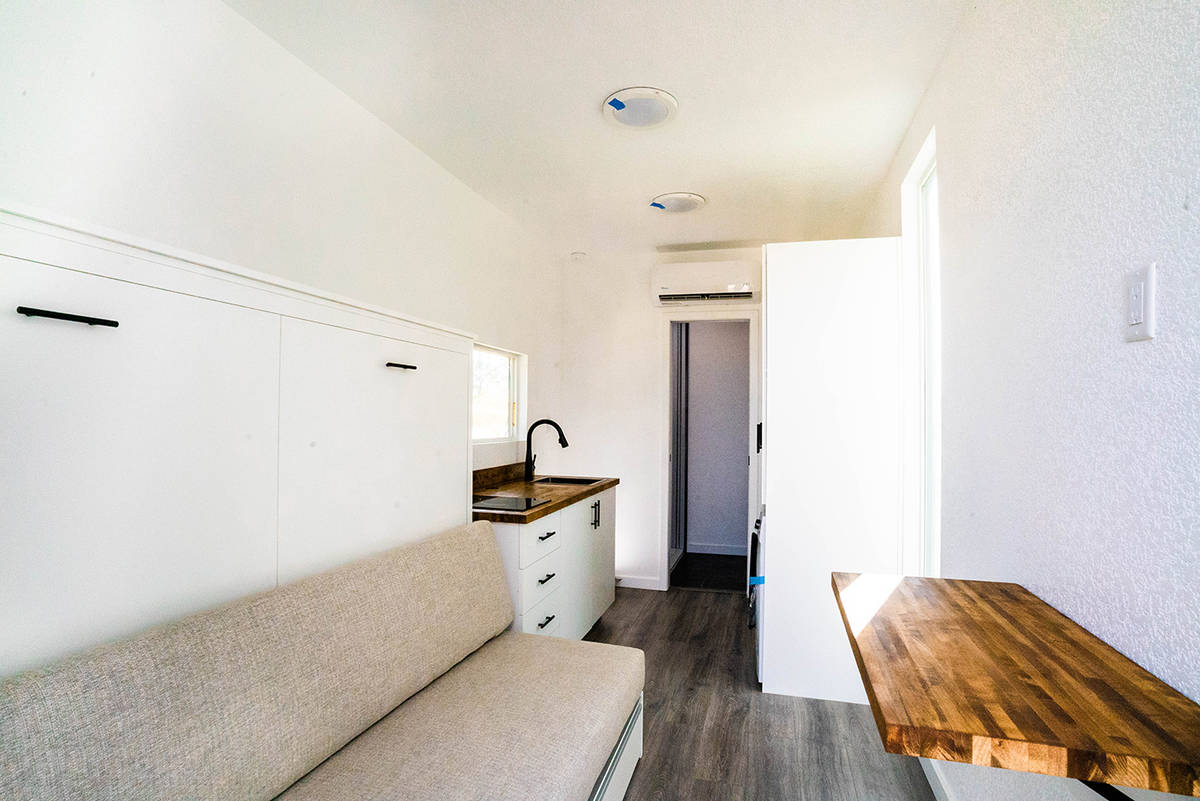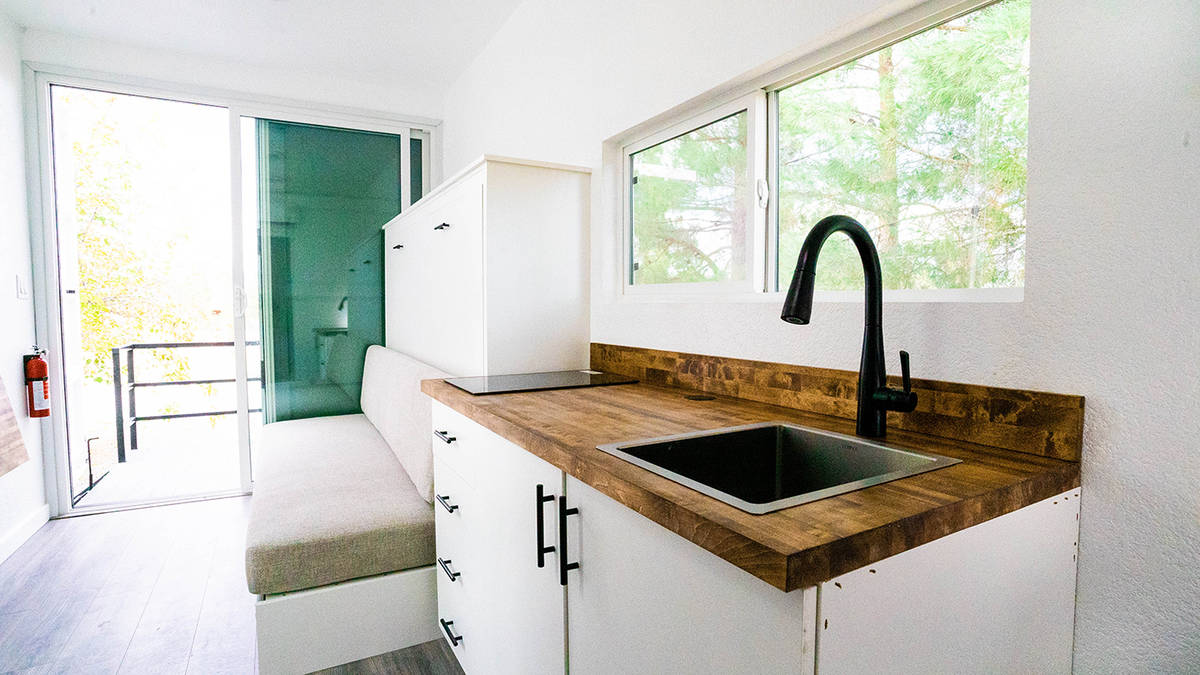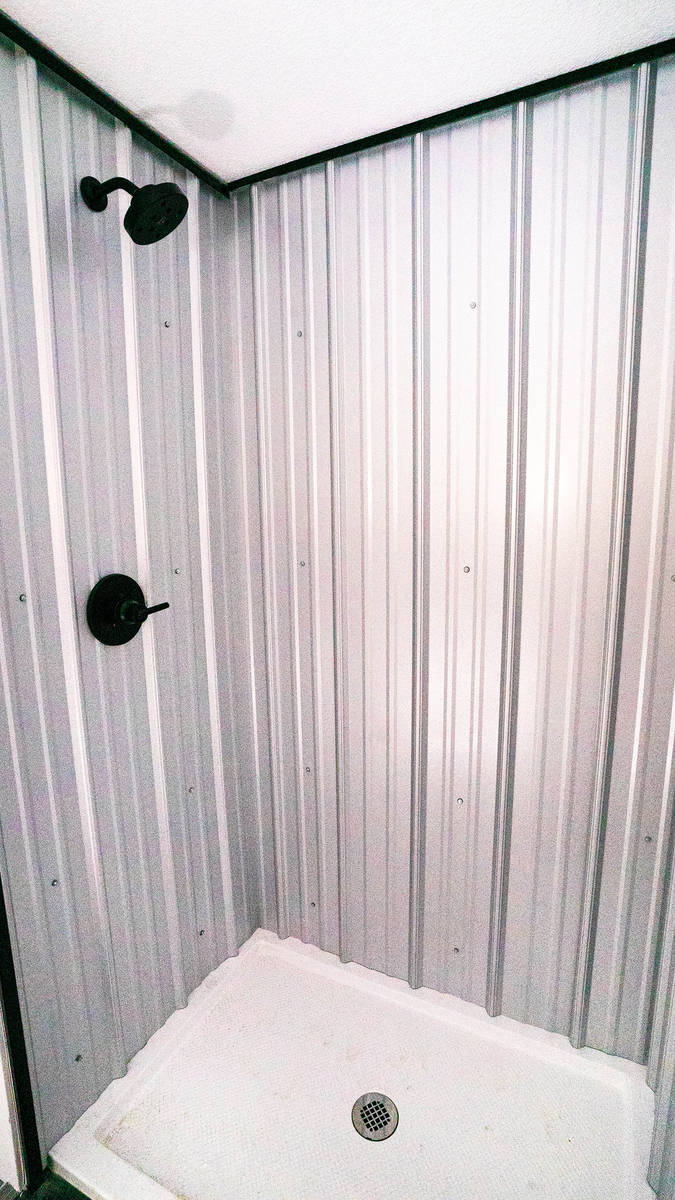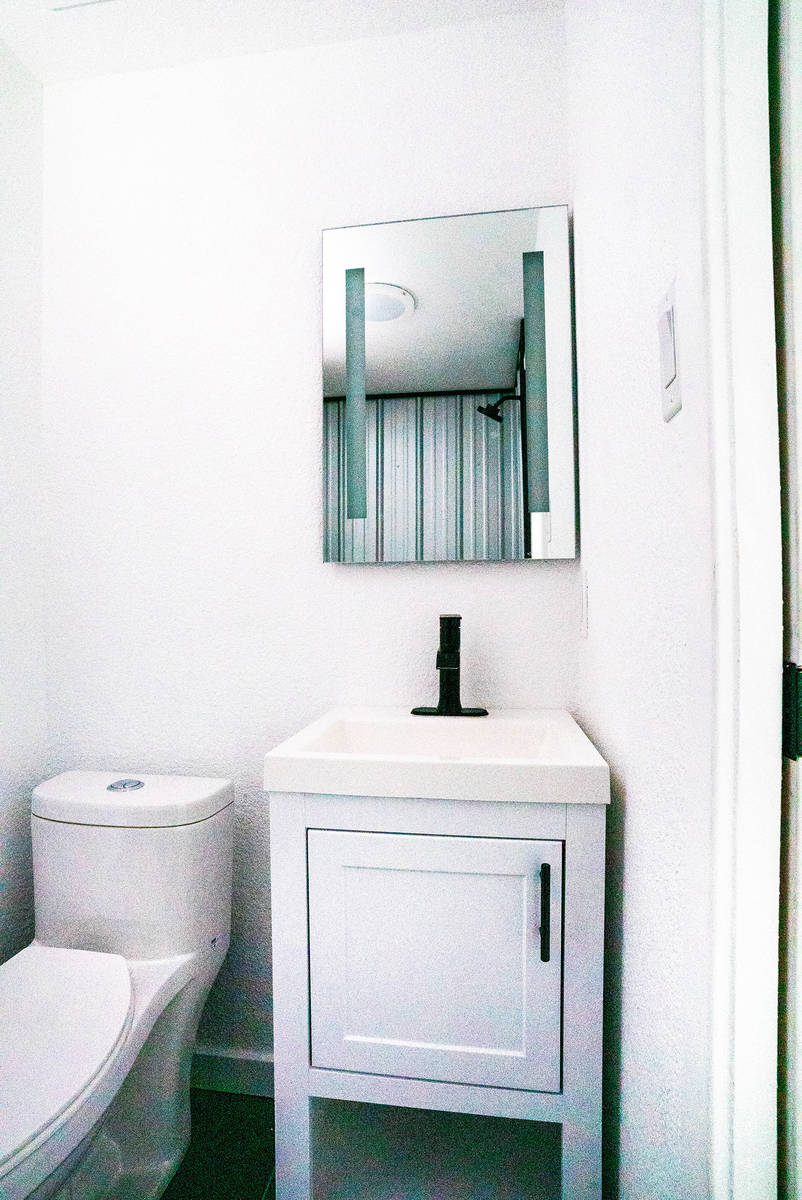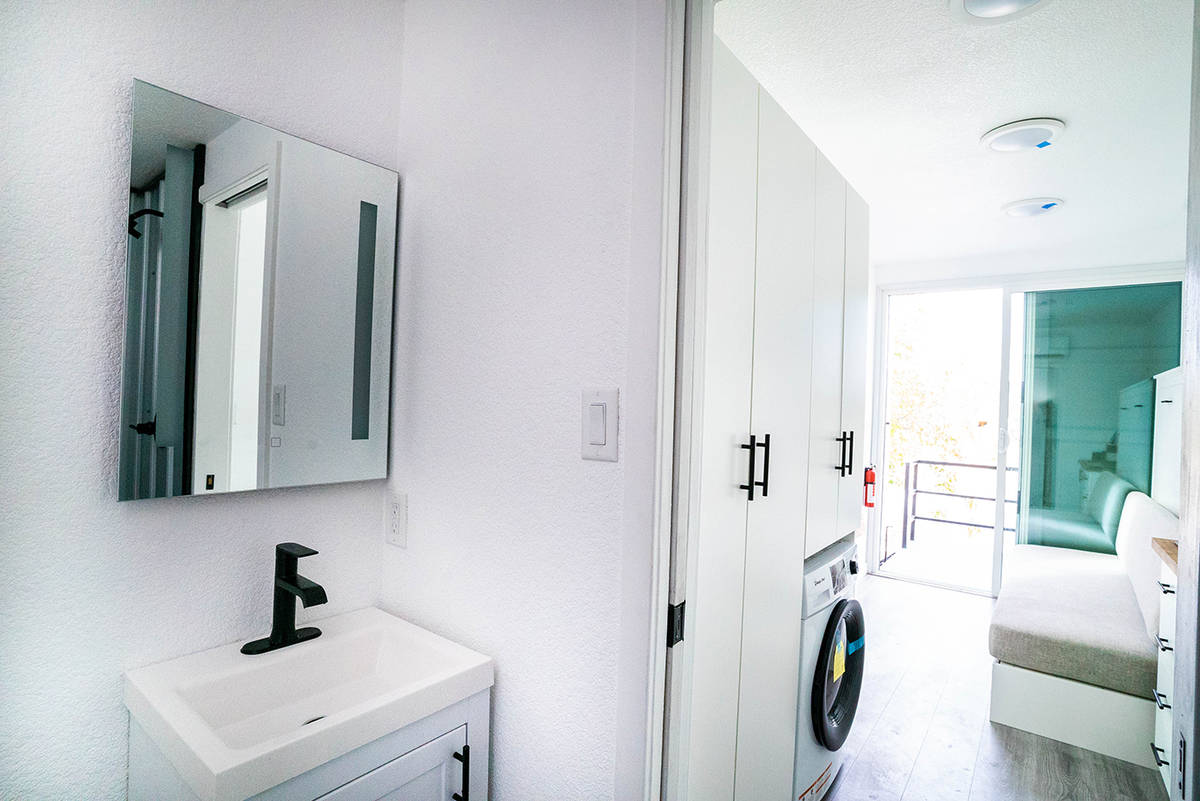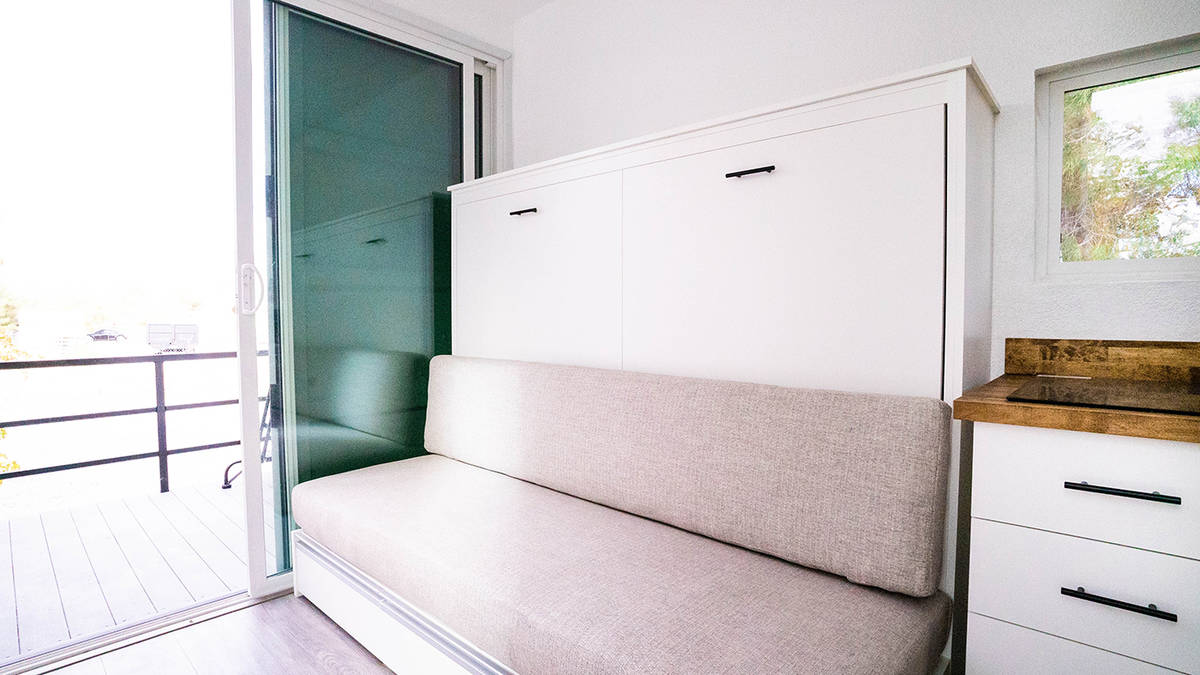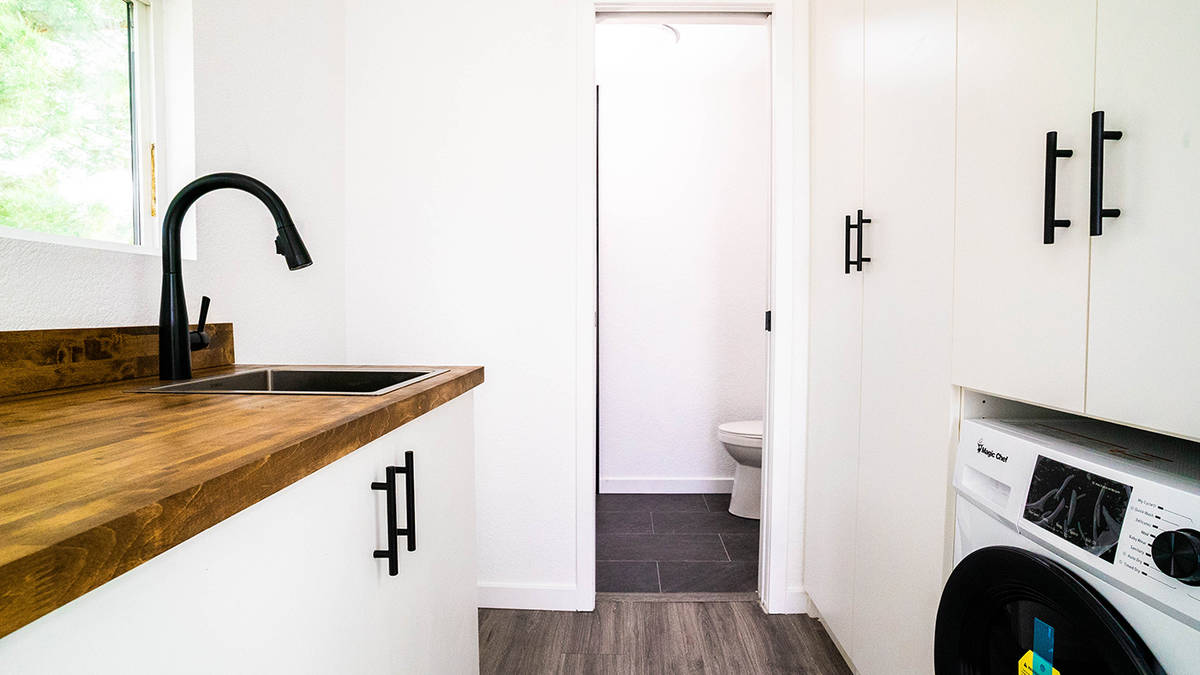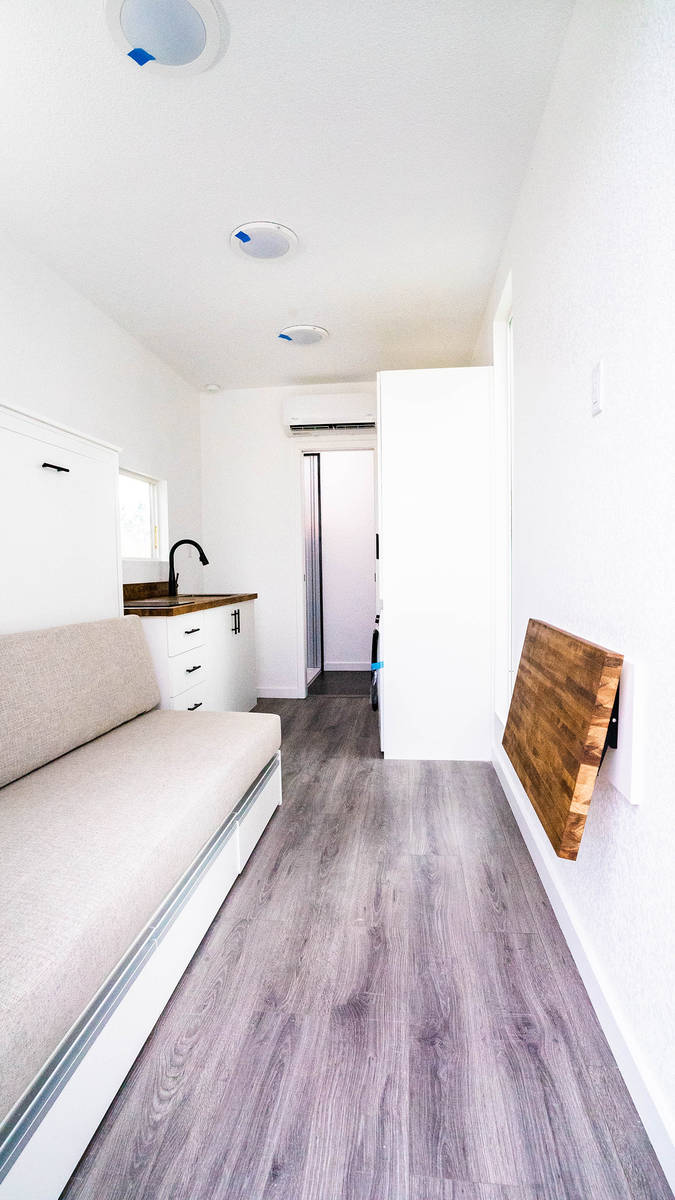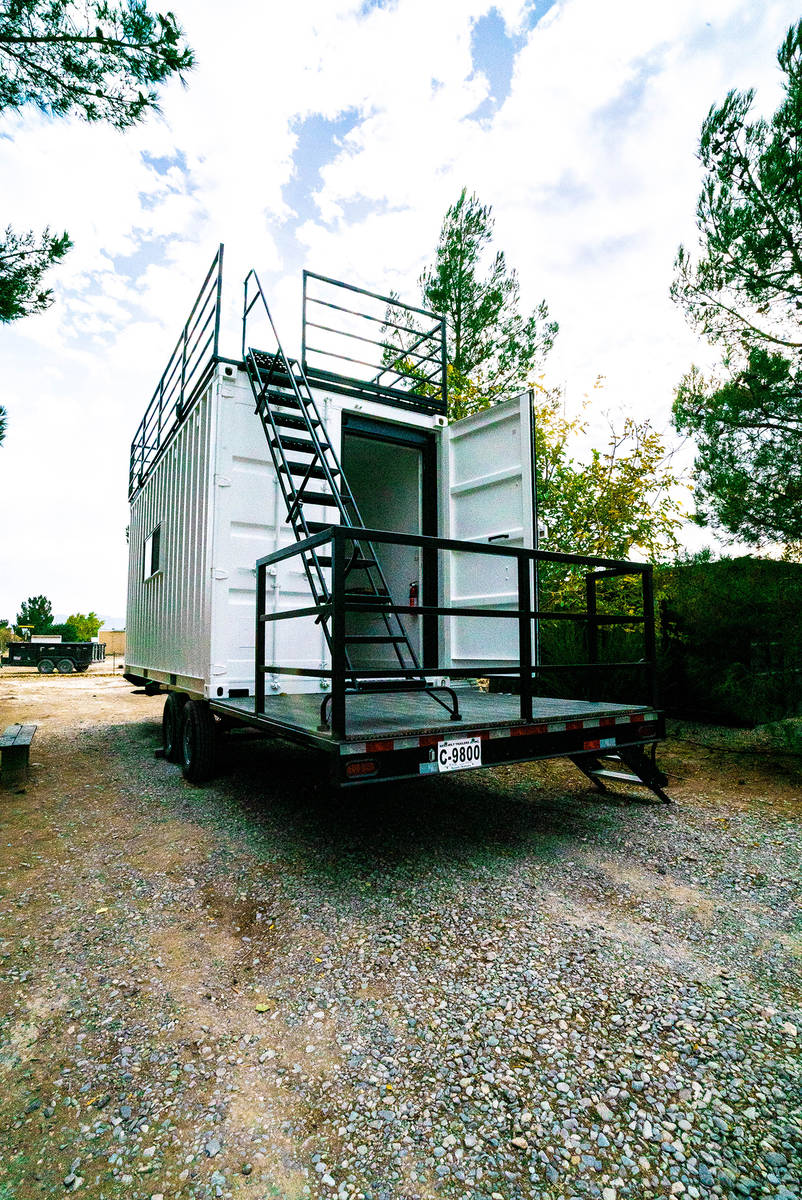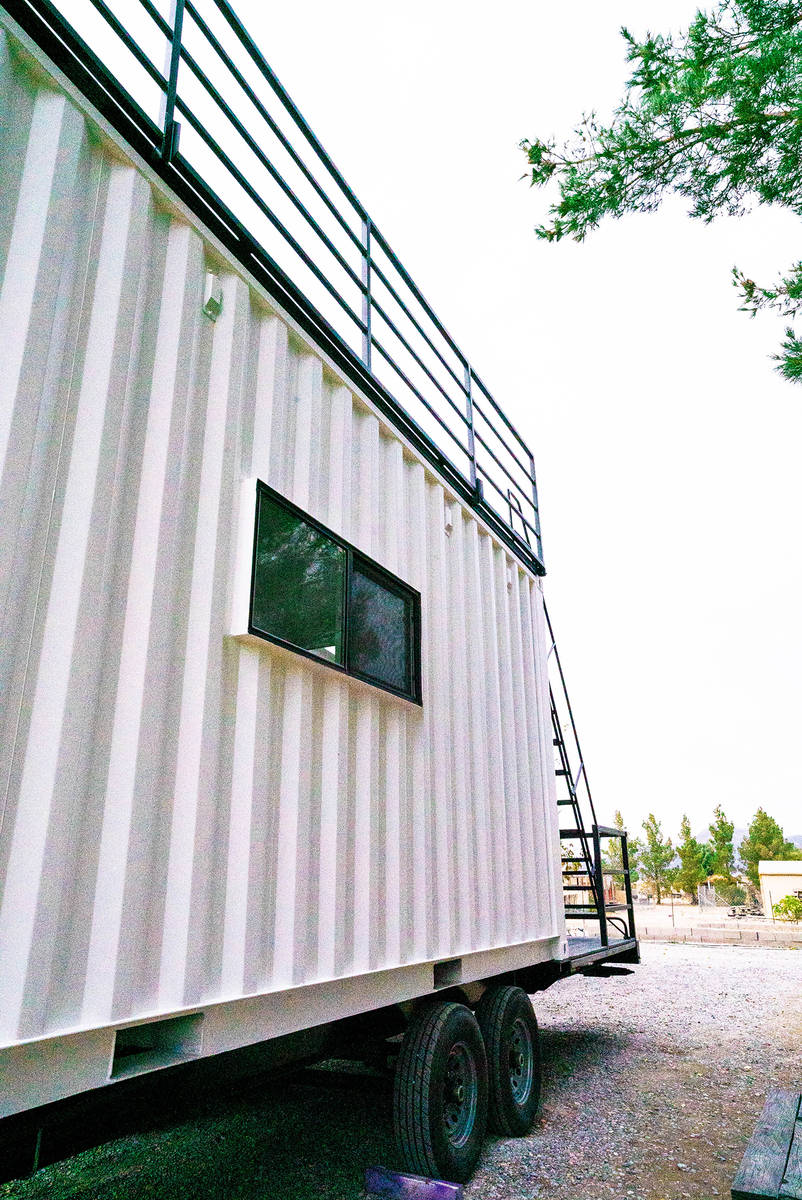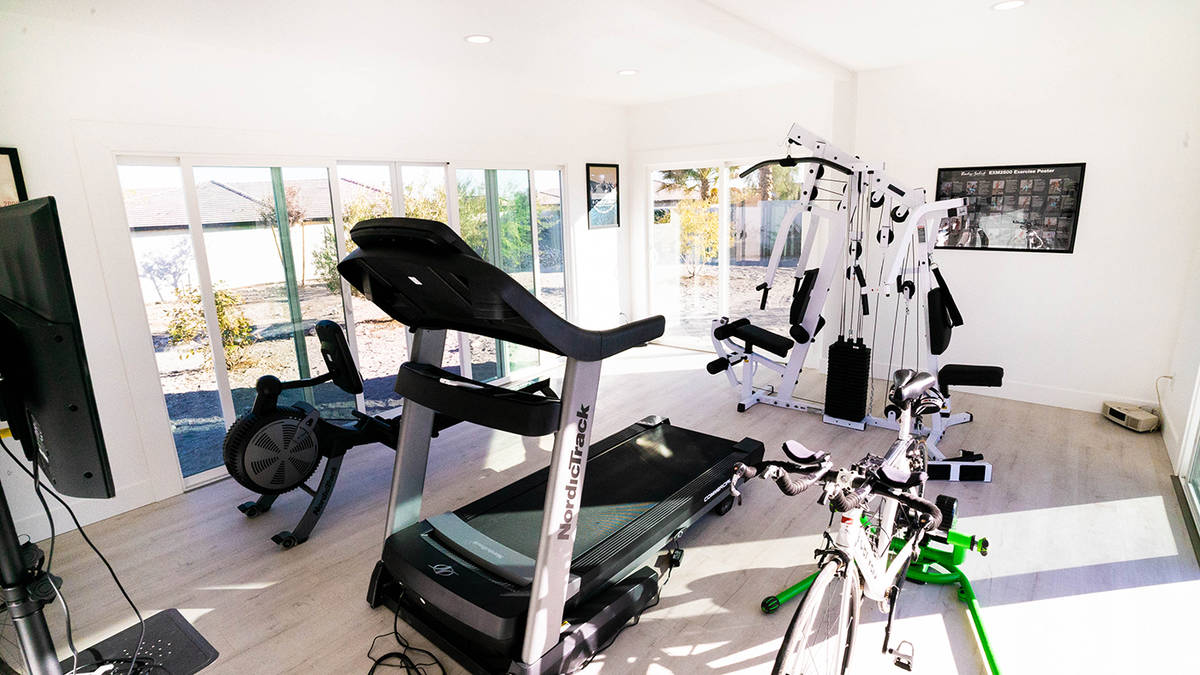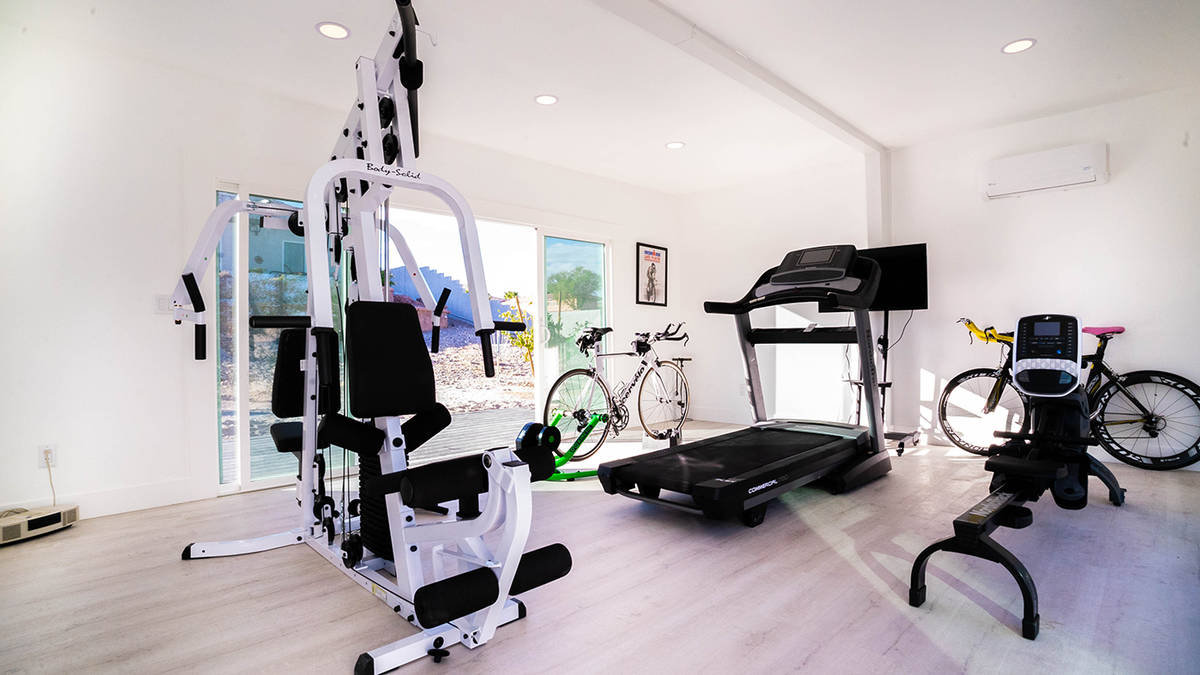Tiny living gifted Sally Lushin with a larger perspective on life.
Courageously referring to herself as a rape survivor, Lushin remembers living like a prisoner in her own home after a violent home invasion that occurred 33 years ago. Struggling to rebuild her life, the outspoken speaker, writer and advocate moved from Indiana to Nevada last year to start over.
“I finally feel like I’m at a place I don’t need to talk about that anymore,” Lushin said. “My tiny home got me to that place. It’s priceless to me because I’m not living in the fear I was.”
She now advocates for a smaller living so, in her opinion, the world can get bigger.
“I’m excited about tiny living,” said Lushin, who named her tiny home SS Freedom. “I plan to tell everyone the benefits of tiny living, especially if you’re a trauma survivor.”
Lushin purchased a 20-foot tiny home last November from Alternative Living Spaces, a Las Vegas-based company specializing in converting shipping containers into useable spaces.
Finding the company through an online search, she was able to buy a unit already in production.
Container tiny homes have increased in popularity since the mid-2000s, when designers began repurposing the units. The container-living trend has shown benefits to owners including lower monthly bills and freedom from clutter while living eco-friendly.
The smaller footprint doesn’t mean compromising on style.
Container tiny homes offer smart design, striking amenities and luxurious finish choices including hardwood flooring, custom woodwork, wood-beamed ceilings, granite counters and custom-designed furnishing.
“We’ve seen a lot of interest in it,” Alternative Living Spaces CEO and founder Tony Lopez said. “It’s been cool to see people open to smaller living.”
Lushin’s 160-square-foot container tiny home features 9-foot ceilings, wood laminate flooring, butcher block counters, custom cabinetry and a couch that pulls down into a full-size Murphy bed with drawers underneath. As part of customizing the space, she had a large wardrobe built to her specifications to provide extra storage.
“I actually designed the wardrobe,” Lushin said. “I had the washer/dryer combo built into the wardrobe, so it takes up half the space.”
The kitchen features a large refrigerator, deep sink, convection microwave and a two-burner stovetop. Her full bath has a walk-in shower, sink, toilet and storage. Expansive sliding glass door entry and several windows provide ample natural light to flow throughout her space.
As part of the home’s exterior, she chose a full-size rooftop deck and elevated front porch.
“You go up on the top deck and see the most beautiful sunrise and sunsets you’ve ever seen,” Lushin said. “I can’t wait to sleep up there under the stars.”
Lushin’s home is recreational vehicle-certified, which means it’s housed on a flatbed trailer. The trailer is skirted to enhance the curb appeal.
Another option for container homes is a non-permitted model placed directly on the ground.
The versatility of containers gives freedom to create other unique spaces such as container offices, gyms, casitas and swimming pools. It also provides different layout options by combining, stacking and configuring the containers in a variety of ways.
Last year, the shutdown inspired Las Vegas residents Laura and Chris Claire to find an alternative to their gym membership. Laura Claire discovered shipping container gyms on Pinterest.
“I was searching online for “workout casitas” and saw many that were made from shipping containers,” Laura Claire said. “It got me thinking because I liked the look of them. I also liked all of the options that could be added.”
The couple decided to combine two 20-foot units from Alternative Living to create the 320-square feet of space required for their equipment needs. The couple installed the container gym in the backyard of their northwest Vegas home, which is sited on more than two-thirds of an acre.
“We wanted something that was more box-like rather than long and narrow,” Laura Claire said. “And this design fit the bill.”
Training for triathlons, the couple installed a NordicTrack treadmill, a Kinetic bike trainer, a NordicTrack rowing machine and a Body-Solid weight machine.
“We use the gym at least six days a week,” Laura Claire said. “With it being in our backyard, there’s really no excuse not to.”
Expansive sliding glass doors on three sides of the container provide ample airflow. A waterproof plank vinyl floor and painted drywalled walls give the space a polished look. Several power outlets, recessed lighting and a mini-split HVAC unit offer ease and comfort. The container unit has an exterior deck on one side.
Besides residential options, the commercial applications include coffee shops, sales centers, pop-up retail centers, boutique hotels, information booths and extra storage.
Lopez said the cost of his tiny homes range from $39,995 to $54,995. Those made into gyms are priced at about $17,995.
The recent shortage of shipping containers has affected his business he said.
“We’ve seen our container pricing increase by 50 to 60 percent from the port of Long Beach, California. Not only have the prices gone up but sourcing containers at all can be very challenging. Especially when you are looking for new containers, which is what we exclusively use.”
“The majority of people are purchasing containers to use as Airbnb rentals,” Lopez said. “Investors are interested in making the unit stand out and be different. We’ve had a lot of fun customizing these tiny homes.”
Lopez recounted designing a container tiny home for an investor who was originally located in a downtown community called Private Residential, developed by the late Tony Hsieh. Private Residential is a collection of tiny houses, Airstreams and micro apartments.
“It was later relocated to the Joshua Tree National Park as an Airbnb rental,” Lopez said. “We used high-gloss bronze car paint and really fun interior fixtures.”
The 20-foot container’s modern-design features a striking black tile ceiling, white shiplap interior walls, tile backsplash in the living room and exposed copper plumbing lines for the shower, vanity and kitchen sink. The bath features a hidden entry with the appearance of shelving and octagonal-shaped tiles shower surround.
Lopez started Alternative Living Spaces in 2017 after spending nine months renovating a 20-foot shipping container bought from a Craigslist ad.
Showcasing a modern, industrial vibe, his first unit featured double, 8½-foot-wide glass front doors that can open 180 degrees. At just 165-square feet, the home provided ample outdoor light through its 11 windows. Lopez completed the unit with sophisticated rustic finishes such as a wood-beamed ceiling, barn door, elevated wood bar top with seating and a repurposed 1930s dresser.
Lopez created a YouTube video to sell the renovated container tiny home, which went viral, garnering over 2 million views. The attention gave Lopez the traction needed to start his business.
“We started getting leads,” Lopez said. “I started the business from there.”
Lopez believes container tiny homes will continue to gain in popularity, especially following last year’s shutdown. He hopes to develop a container tiny home community as an affordable housing alternative.
“One of the reasons I got into business was to make a difference with affordable housing,” Lopez said. “We’re interested in offering people an option that’s comfortable and affordable in Vegas. I think that would be great.”

